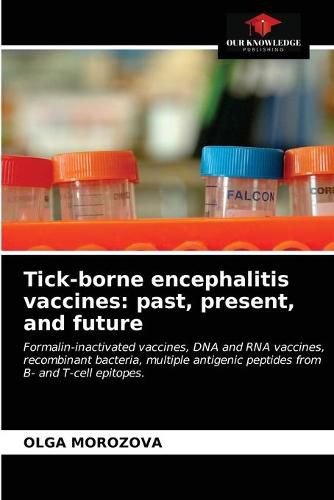Readings Newsletter
Become a Readings Member to make your shopping experience even easier.
Sign in or sign up for free!
You’re not far away from qualifying for FREE standard shipping within Australia
You’ve qualified for FREE standard shipping within Australia
The cart is loading…






This title is printed to order. This book may have been self-published. If so, we cannot guarantee the quality of the content. In the main most books will have gone through the editing process however some may not. We therefore suggest that you be aware of this before ordering this book. If in doubt check either the author or publisher’s details as we are unable to accept any returns unless they are faulty. Please contact us if you have any questions.
Inactivated vaccines are mainly used worldwide to prevent flavivirus infections. At present, six vaccines against tick-borne encephalitis produced by formalin inactivation of tick-borne encephalitis virus (BTV) from chicken embryo fibroblasts are approved in Russia. There are no vaccines based on the Siberian type of VCE, which dominates in most endemic areas of Russia. The average coverage of the population of endemic regions of Russia by vaccination against tick-borne encephalitis is about 5%. Long three-times immunization and the need for revaccination every 3 years have necessitated the search for new ways of prevention. Gene immunization of mice with plasmid DNA with cloned prM, E and NS1 VCE genes under the control of promoters recognized by eukaryotic RNA polymerases provided protection only against the homologous strain of the virus. DNA vaccines proved to be unstable in eukaryotic cells and capable of integration into cellular chromosomes. Introduction of viral full-length genomic RNA but not the E and NS1 genes also resulted in protection against viral infection. Recombinant bacteria and multiple antigenic peptides induced virus-specific antibodies.
$9.00 standard shipping within Australia
FREE standard shipping within Australia for orders over $100.00
Express & International shipping calculated at checkout
This title is printed to order. This book may have been self-published. If so, we cannot guarantee the quality of the content. In the main most books will have gone through the editing process however some may not. We therefore suggest that you be aware of this before ordering this book. If in doubt check either the author or publisher’s details as we are unable to accept any returns unless they are faulty. Please contact us if you have any questions.
Inactivated vaccines are mainly used worldwide to prevent flavivirus infections. At present, six vaccines against tick-borne encephalitis produced by formalin inactivation of tick-borne encephalitis virus (BTV) from chicken embryo fibroblasts are approved in Russia. There are no vaccines based on the Siberian type of VCE, which dominates in most endemic areas of Russia. The average coverage of the population of endemic regions of Russia by vaccination against tick-borne encephalitis is about 5%. Long three-times immunization and the need for revaccination every 3 years have necessitated the search for new ways of prevention. Gene immunization of mice with plasmid DNA with cloned prM, E and NS1 VCE genes under the control of promoters recognized by eukaryotic RNA polymerases provided protection only against the homologous strain of the virus. DNA vaccines proved to be unstable in eukaryotic cells and capable of integration into cellular chromosomes. Introduction of viral full-length genomic RNA but not the E and NS1 genes also resulted in protection against viral infection. Recombinant bacteria and multiple antigenic peptides induced virus-specific antibodies.